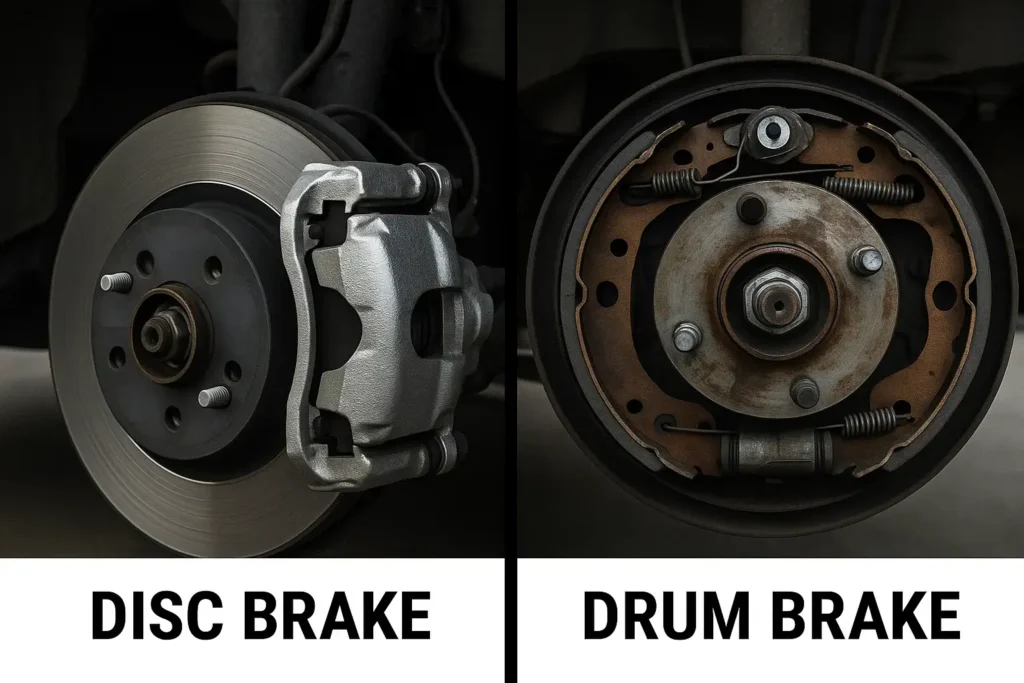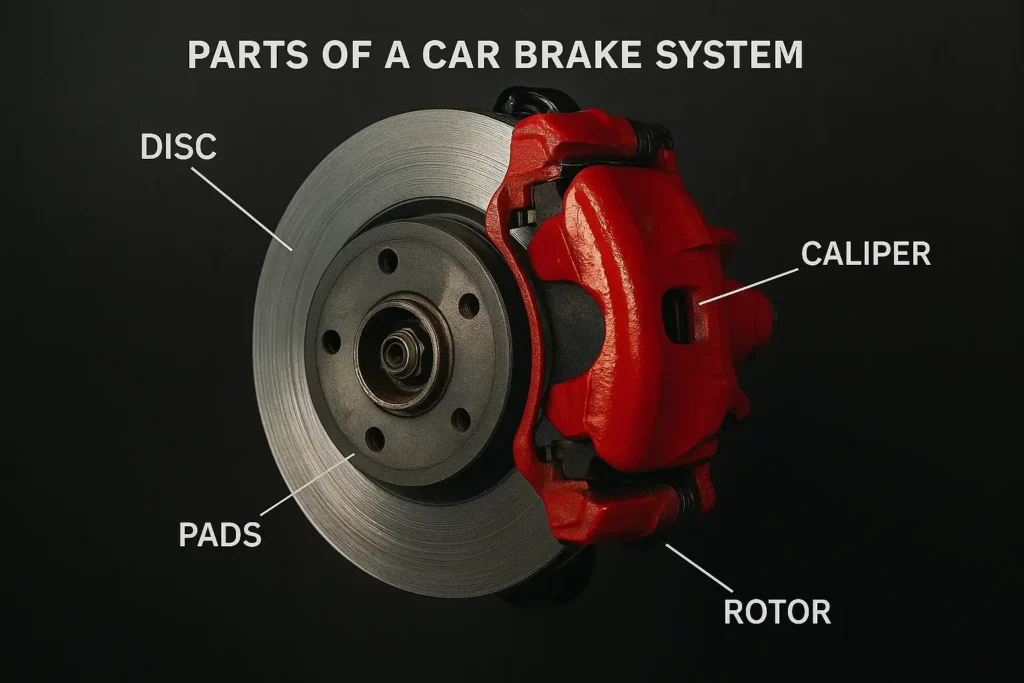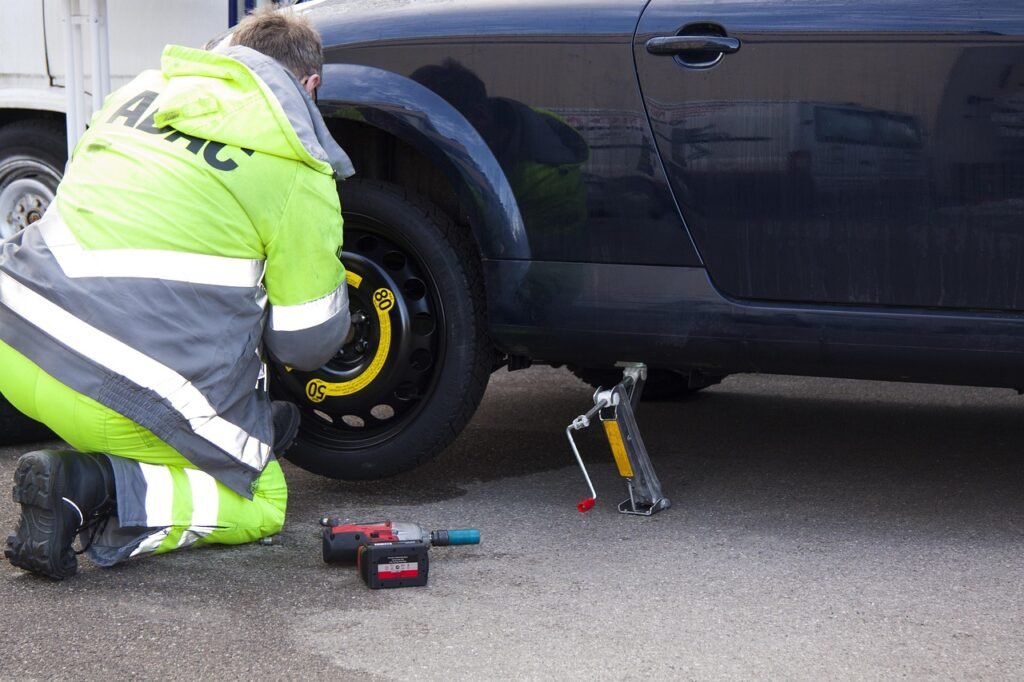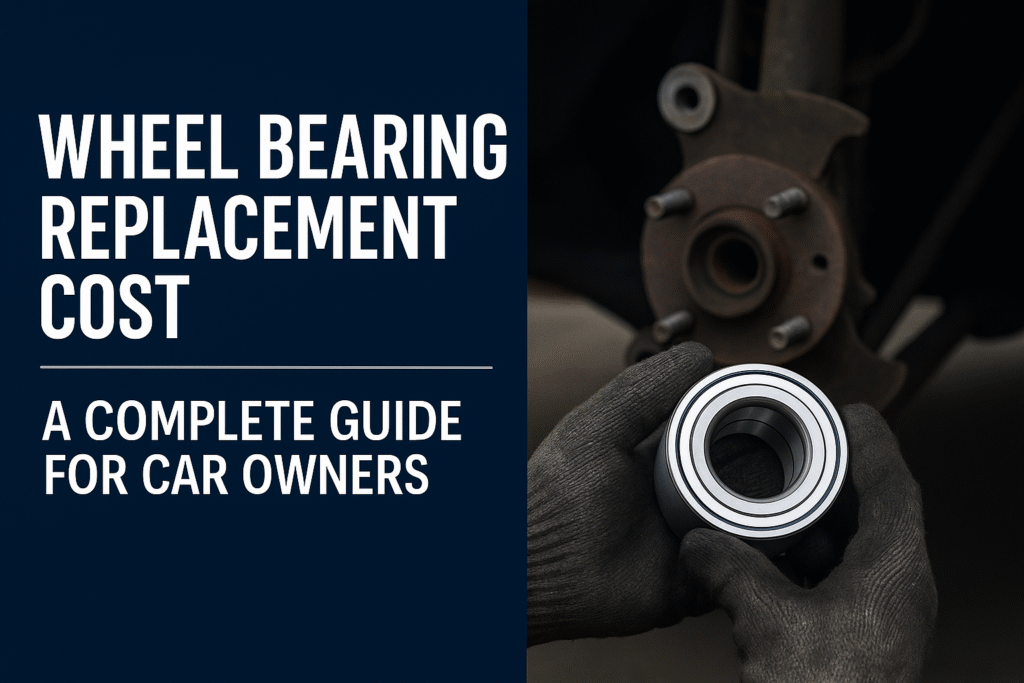Car brakes are one of those systems you probably don’t think about until you absolutely have to. But without them, every red light would be a gamble and every downhill road a heart attack waiting to happen.
In this guide, we’ll take a deep dive into how car brakes work, what they’re made of, why they matter, and how you can keep them in top shape. Whether you’re a casual driver or a gearhead, understanding your brakes is essential for safety, performance, and peace of mind.
What Are Car Brakes?
At their core, car brakes convert motion into heat. They take the kinetic energy of your moving car and turn it into thermal energy through friction. This friction is what slows you down.
You push the brake pedal, and—thanks to some clever hydraulics and materials science—your car responds by applying friction to the wheels. That’s the whole system in a nutshell.
💡 Braking is energy conversion. Physics. Safety. Magic—all in one.
The Components of a Brake System
Let’s break down what happens under the hood (and the wheel):
- Brake Pedal: Your foot’s command center
- Master Cylinder: Functions to pressurizes the brake fluid
- Brake Lines: Hydraulic arteries for brake fluid
- Calipers: Clamp down on the rotor (in disc brakes)
- Brake Pads: Friction material that contacts the rotor
- Rotor (Disc): The spinning metal disc connected to the wheel
- Drum (if drum brakes): A round housing that brake shoes press against
Disc Brakes vs. Drum Brakes
Disc Brakes
- Found in most modern vehicles (especially front wheels)
- Use calipers and pads to squeeze a spinning rotor
- Better at shedding heat = better for performance and safety
Drum Brakes
- Older tech but still used in rear brakes of some vehicles
- Use brake shoes inside a spinning drum
- Can overheat faster, less consistent under heavy use

The Science of Friction and Heat
When you brake, friction builds up fast—and that generates a lot of heat. This is why materials like ceramic, semi-metallic, and organic compounds are used in brake pads.
Too much heat leads to brake fade, which makes your brakes feel mushy or unresponsive. That’s why vented rotors, slotted or drilled rotors, and cooling ducts are used in performance cars.
🔥 Hot brakes = soft brakes. Heat management is everything.
Types of Brake Pads
Choosing the right brake pad depends on your driving style:
- Organic Pads: Quiet, cheap, and gentle ideal for daily driving
- Semi-Metallic Pads: Good performance, slightly noisy, wear rotors faster
- Ceramic Pads: Clean, quiet, long-lasting great for most drivers but costly
Maintenance Tips That Actually Matter
Here’s how you keep your brake system healthy:
- Check your brake fluid: Low or dirty fluid? Time to flush.
- Listen: Squeals, grinding, or screeches are early warning signs.
- Feel: Does your brake pedal feel spongy or pulse? Might be air or warped rotors.
- Inspect brake pads: Replace them before they wear to metal.
- Don’t ignore warning lights: Modern cars have sensors for a reason.
What Is Brake Fade?
Brake fade occurs when your brakes overheat and lose effectiveness. You’ll know it when:
- The pedal sinks too far
- The car doesn’t slow as fast
- You smell something burning
Avoid it by downshifting on hills, braking gradually, and upgrading to high-temp components if needed.
Brake Upgrades: When to Go Beyond Stock
- Slotted/Drilled Rotors: Better cooling, better performance
- Steel Braided Brake Lines: Firmer pedal feel, more precise braking
- Big Brake Kits: Ideal for track or high-performance vehicles
- High-temp Brake Fluid: Reduces risk of fade in extreme conditions
These upgrades are worth it if you drive hard, tow loads, or just want that extra bit of confidence.
Real-World Tip: Don’t “Ride” Your Brakes
When going downhill, use a lower gear and let engine braking do the work. Constantly pressing the pedal heats up your brakes and wears them out faster.
⚠️ Bad habits = bad brakes. Drive smarter, not harder.
Lifespan: How Long Should Brakes Last?
| Component | Average Lifespan |
|---|---|
| Brake Pads | 30,000 – 70,000 miles |
| Rotors | 50,000 – 70,000 miles |
| Brake Fluid | Every 2 years or 30,000 mi |
| Brake Lines | Inspect annually |
Actual mileage depends on your driving habits, terrain, and how often you maintain the system.
Final Word
Car brakes aren’t glamorous but they’re vital. The more you understand them, the better you can maintain them and stay safe. If your brakes don’t feel right, don’t wait. Check them, fix them, upgrade them.
They’re not just parts they’re your peace of mind.
FAQs
How do car brakes actually work?
When you press the brake pedal, hydraulic fluid triggers calipers to squeeze brake pads against the rotor, creating friction that slows the vehicle. ABS systems prevent wheel lock during sudden stops.
How often should I replace my car brakes?
Brake pads typically need replacement every 30,000 to 70,000 miles. Rotors may last longer but should be checked during every brake service. Maintenance frequency varies with driving habits.
What are the warning signs of brake problems?
Common signs include squealing noises, a vibrating pedal, longer stopping distances, or a soft brake pedal. These indicate worn pads, warped rotors, or hydraulic issues that need immediate attention.
Can I check my car brakes at home?
Yes, you can inspect brake pad thickness through the wheels and check for fluid levels or strange noises. However, for a full inspection, it’s best to consult a certified mechanic.



